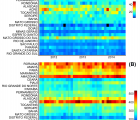Introduction: Mosquito-borne infectious diseases such as dengue, chikungunya, and now Zika, pose a public health threat to the US, particularly Florida, the Gulf Coast states, and Hawaii. Recent autochthonous transmission of dengue and chikungunya in Florida, the recent dengue outbreak in Hawaii, and the potential for future local spread of Zika in the US, has led to the consideration of novel approaches to mosquito management. One such novel approach, the release of sterile genetically modified mosquitoes, has been proposed as a possible intervention, and a trial release of GM mosquitoes is being considered in one Florida community. However, this proposal has been controversial. The objective of this research was to increase understanding of community knowledge, attitudes, and beliefs regarding mosquito control and GM mosquitoes.
Methods: An 18-question self-administered survey was mailed to all households in the identified Key West, Florida neighborhood where a GM mosquito trial has been proposed. This survey was fielded between July 20, 2015 and November 1, 2015. The main outcome variable was opposition to the use of GM mosquitoes. Measures included demographic information and opinions on mosquitoes, mosquito control, and vector-borne diseases.
Results: A majority of survey respondents did not support use of GM mosquitoes as a mosquito control method.
Discussion: Reasons for opposition included general fears about possible harmful impacts of this intervention, specific worries about human and animal health impacts from the GM mosquitoes, and environmental concerns about potential negative effects on the ecosystem. Residents were more likely to oppose GM mosquito use if they had a low perception of the potential risks posed by diseases like dengue and chikungunya, if they were female, and if they were less concerned about the need to control mosquitoes in general. These findings suggest a need for new approaches to risk communication, including educational efforts surrounding mosquito control and reciprocal dialogue between residents and public health officials.

